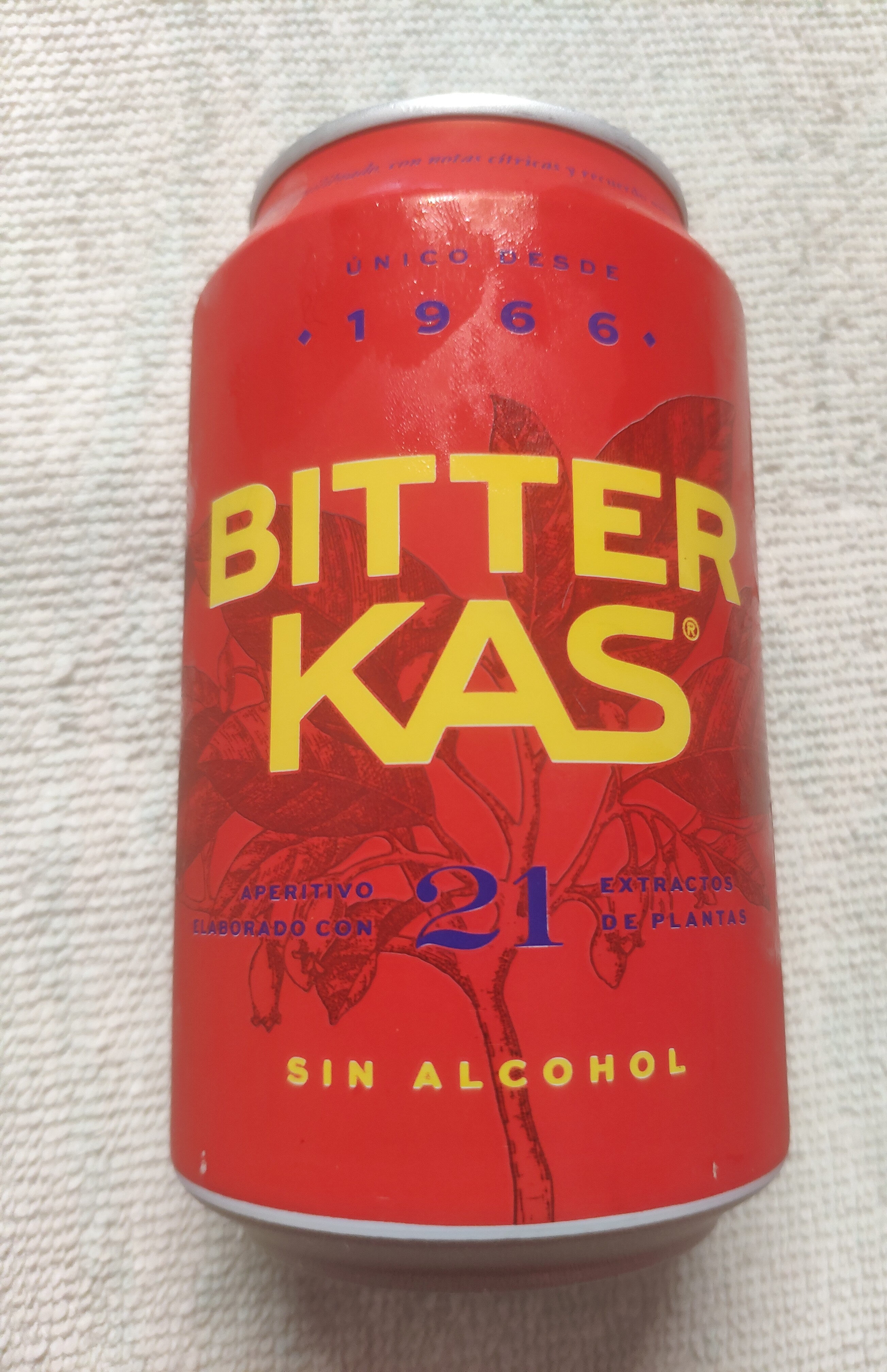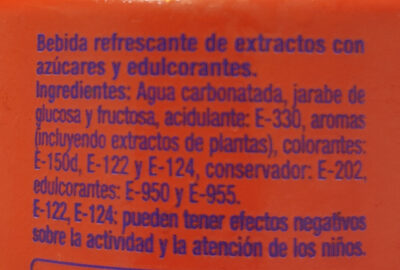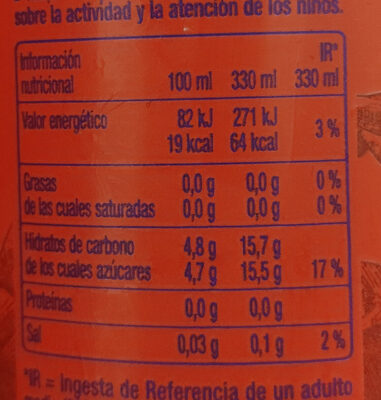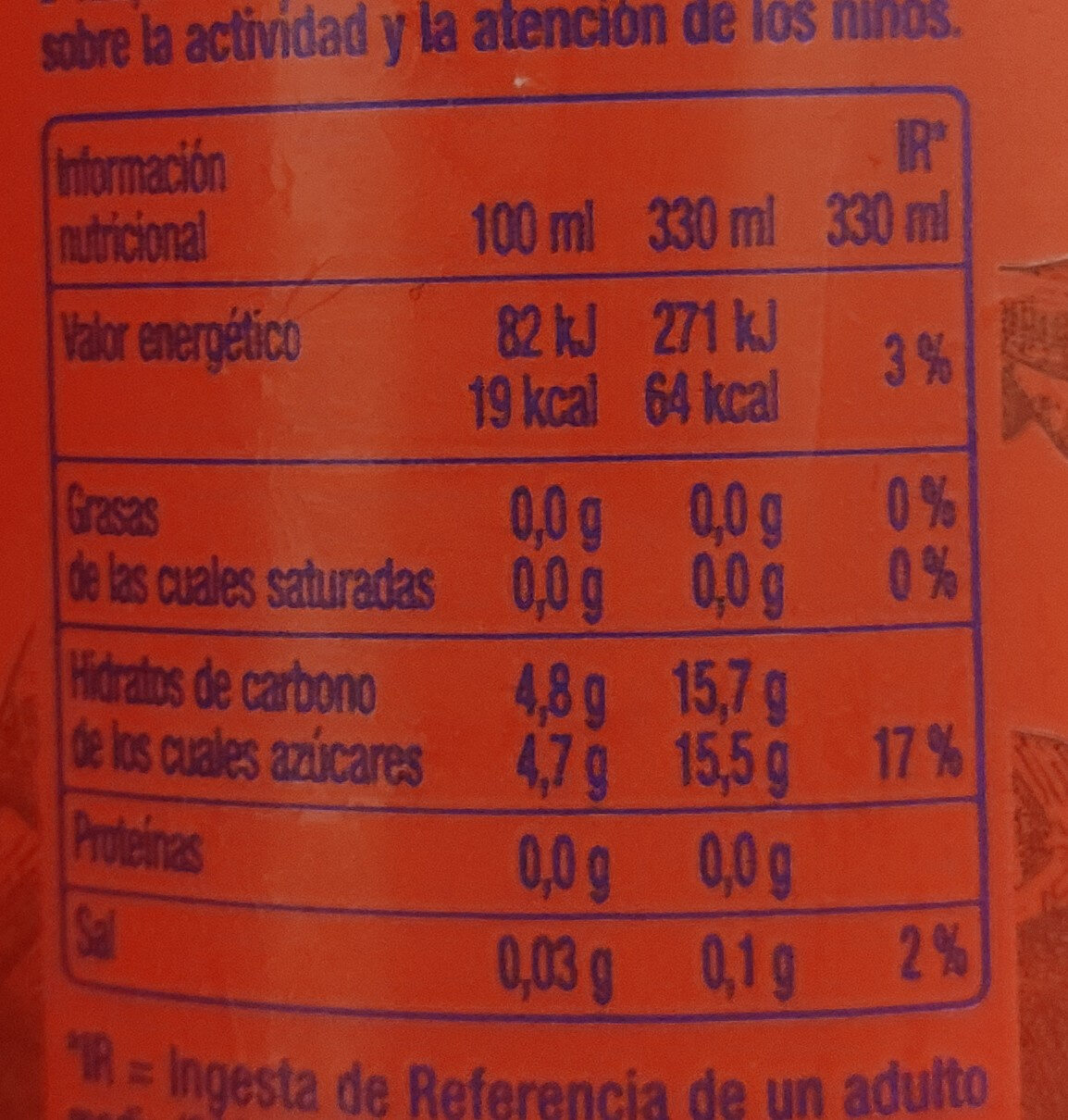Biter Kas - 300 ml
This product page is not complete. You can help to complete it by editing it and adding more data from the photos we have, or by taking more photos using the app for Android or iPhone/iPad. Thank you!
×
Barcode: 8410408070307 (EAN / EAN-13)
Common name: Bebida refrescante de extractos con azúcares y edulcorantes
Quantity: 300 ml
Packaging: Metal, Recyclable Metals, Aluminium, Can
Brands: Kas
Categories: Beverages, Carbonated drinks, Sodas, Sweetened beverages
Labels, certifications, awards: Punto Verde, Sin alcohol
Manufacturing or processing places: Vitoria, España
Link to the product page on the official site of the producer: https://www.pepsico.pt/docs/librariespro...
Stores: Alcampo, Eroski, Carrefour, Caprabo, Mercadona, Dia, El Corte Inglés, Hipercor, Condis
Countries where sold: Spain
Matching with your preferences
Environment
Packaging
Transportation
Report a problem
Data sources
Product added on by quintana3216
Last edit of product page on by packbot.
Product page also edited by alia, inf, jog13ovd, kiliweb, neptuno, openfoodfacts-contributors, roboto-app, tacite, tacite-mass-editor, thaialagata, yuka.UJtAHdmXJc99IMTS46QK1wSBO_n6Kd1QQW5Xow, yuka.Ukl3TEd2UXVwT1VGbGNFZzlSYjF3OEJFNWFLbEJ6Nm9DZnBKSVE9PQ, yuka.ZHFRN1FMVXdsdjQxeXNjWjF6TGM2OElybWFXV1l6dUxPOG9RSWc9PQ, yuka.ZWFjZlAvZ3d2ZDBXaGNZOXhDK0ozZE55eXBQekJHS0dJcm83SUE9PQ, yuka.ZjdnTU1vb0lsTjBtaS9CdjRSaVA2NDRvNktXM2VGdXdDT2M0SUE9PQ.










